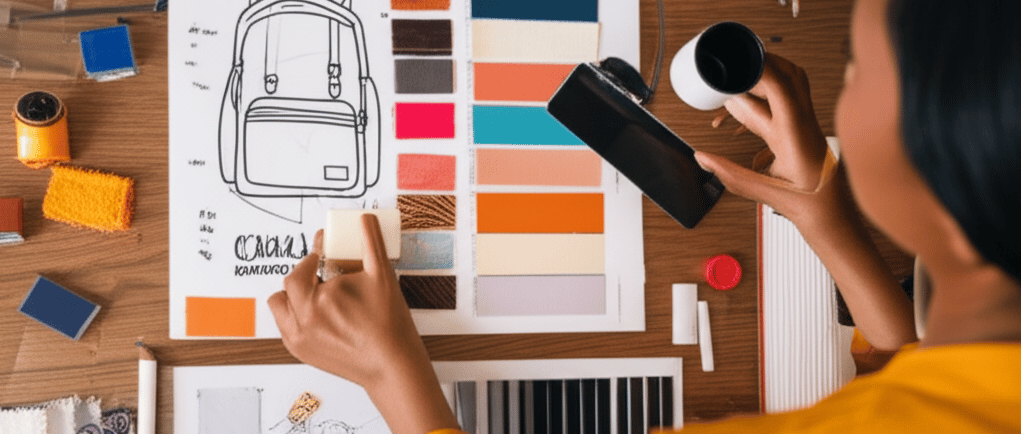How to choose materials and styles for custom backpacks
Choosing the right materials and styles for custom backpacks is crucial to creating a product that fits your brand's needs, resonates with your target audience, and meets functional requirements. Here’s a comprehensive guide to help you navigate the decision-making process:
7/24/20253 min read


1. Understand the Function and Purpose
The material and style of the backpack should align with its intended use. Whether it’s for business, travel, school, or outdoor activities, each purpose has specific requirements in terms of durability, functionality, and aesthetics.
Business Use: A sleek, professional backpack made from premium leather or high-density nylon is ideal. Features like padded compartments for laptops or tablets may be important.
Travel: For backpacks meant for frequent travel, consider using water-resistant fabrics like ripstop nylon or polyester with durable zippers and multiple compartments.
Outdoor Activities: For hiking or camping backpacks, opt for lightweight yet durable materials like ripstop nylon or Cordura. These materials can withstand wear and tear.
School Use: For student backpacks, comfort is key, so choosing soft, breathable fabrics like canvas or polyester with extra padding for straps is important.
2. Material Types and Considerations
A. Durable Fabrics
The material chosen must align with the functional demands of the backpack. Here are the most common fabric options:
Nylon:
Advantages: Lightweight, strong, and resistant to abrasion.
Best For: Everyday use, travel, school backpacks.
Considerations: Choose ripstop nylon for added durability, especially for backpacks exposed to rough conditions.
Polyester:
Advantages: Affordable, resistant to shrinking and stretching, holds color well.
Best For: Promotional backpacks, school bags, and budget-friendly options.
Considerations: Not as durable as nylon but suitable for less rugged use.
Canvas:
Advantages: Sturdy, natural look, and feel.
Best For: Casual, fashion, and eco-conscious backpacks.
Considerations: Heavier than nylon or polyester; may require more care to maintain.
Leather:
Advantages: Premium, sophisticated look, and durability.
Best For: Luxury or high-end business backpacks.
Considerations: Higher cost and requires maintenance to prevent cracking or fading over time.
Cordura®:
Advantages: Extremely durable and resistant to abrasion, tears, and punctures.
Best For: Outdoor, military-style, or heavy-duty backpacks.
Considerations: Heavier material, typically used in performance-oriented designs.
Eco-Friendly Materials:
Advantages: Sustainable and appeals to eco-conscious consumers.
Best For: Brands with a focus on sustainability or outdoor activities.
Considerations: May cost more than traditional materials but align well with environmentally aware customers.
B. Specialty Fabrics
Certain fabrics can add additional benefits for custom backpacks:
Waterproof or Water-Resistant Fabrics:
Best For: Travel backpacks, outdoor backpacks.
Materials: Polyurethane (PU) coated fabric, PVC, waterproof nylon.
Why Choose: Protection against weather elements is essential for backpacks used outdoors or for commuting in rainy environments.
Anti-theft Materials:
Best For: Urban travel or business use.
Materials: Slash-proof fabrics with added security features like lockable zippers.
Why Choose: To protect valuables in high-risk areas.
Reflective Materials:
Best For: Night-time or cycling backpacks.
Why Choose: Added visibility for safety when commuting at night or in low-light environments.
3. Styles and Features to Consider
The style and design elements should reflect both functionality and aesthetics. Here are some common styles and features:
A. Common Styles
Backpack (Standard Backpack):
Best For: Everyday use, school, casual wear.
Features: Large main compartment, front zipper pockets, padded straps.
Business Backpack:
Best For: Professionals who need to carry electronics and documents.
Features: Laptop compartments, sleek design, leather or high-quality nylon.
Travel Backpack:
Best For: Frequent travelers or adventurers.
Features: Multiple compartments, water resistance, ergonomic straps, and secure zippers.
Tote Backpack:
Best For: Fashionable backpacks that can be carried on the back or by hand.
Features: Open-top design, handles and adjustable straps.
Daypack:
Best For: Lightweight, everyday bags, often for minimal packing.
Features: Compact, simple design, fewer compartments.
Rucksack/Outdoor Backpack:
Best For: Hiking, trekking, and other outdoor activities.
Features: Durable materials, lots of compartments for gear, padded hip belts.
B. Essential Features
Laptop Compartment: Essential for business and travel backpacks. Ensure it’s padded and secure.
Water Bottle Holder: Handy for everyday backpacks, especially for school or gym use.
Compression Straps: Great for outdoor backpacks to tighten and secure the load.
Ergonomic Straps and Back Panel: For added comfort, especially in larger or heavier backpacks.
Pockets & Compartments: Having a variety of pockets for organization (e.g., front pockets for small items, hidden compartments for valuables).
Zippers & Closures: High-quality zippers (such as YKK) are important for durability. Magnetic, buckle, or Velcro closures offer a unique look.
4. How to Match Material with Design
Minimalist Design: Opt for sleek materials like nylon or leather in neutral tones. Avoid too many compartments to keep it clean.
Sporty/Outdoor: Go for Cordura or ripstop nylon in bold colors. Add a mix of straps, zippers, and compartments to enhance its performance.
Fashion-Oriented: Choose canvas or vegan leather and combine it with stylish, trendy designs. Go for unique colors or prints.
Professional: Use leather or premium nylon in dark, sophisticated colors. Opt for clean lines and minimal branding.
5. Budget Considerations
Premium Materials: Leather, Cordura, and eco-friendly materials can increase the cost.
Mass-Produced Materials: Polyester and standard nylon are cost-effective for bulk production.
Customization Features: Additional costs may arise from adding features like embroidered logos, unique linings, or custom zippers.
Choosing the right materials and styles for custom backpacks is a balance between the backpack’s purpose, desired aesthetics, and functional features. Make sure to consider the intended use, your target audience, and your brand image when making decisions. Whether you’re looking for a high-end professional backpack, a durable outdoor bag, or a fashion-forward design, the right material and style can make all the difference.
Let me know if you'd like more specific recommendations or help with creating any visuals for this topic!
BACKPACK SUPPLIER
Backpacksupplier is a professional backpack manufacturer specializing in OEM & ODM services. We offer high-quality custom backpacks, travel bags, and business backpacks with flexible MOQ and competitive pricing. Partner with us for premium craftsmanship, innovative designs, and global shipping solutions.
Follow
© 2017-2025. All rights reserved.
Contact Us
📍 Address: Guangzhou, China
📧 Email: ivan@backpacksupplier.com
🌐 Website: backpacksupplier.com